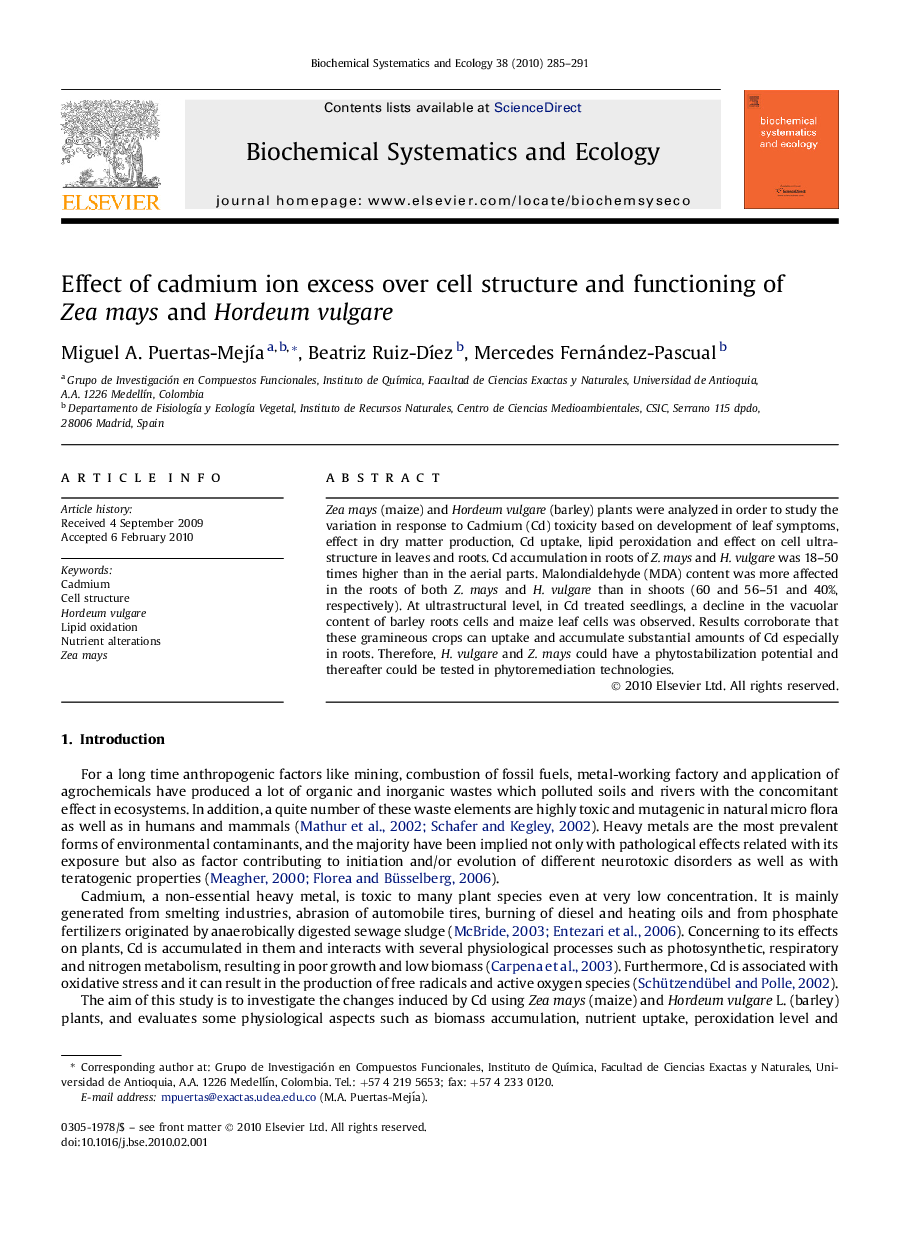| Article ID | Journal | Published Year | Pages | File Type |
|---|---|---|---|---|
| 1352064 | Biochemical Systematics and Ecology | 2010 | 7 Pages |
Zea mays (maize) and Hordeum vulgare (barley) plants were analyzed in order to study the variation in response to Cadmium (Cd) toxicity based on development of leaf symptoms, effect in dry matter production, Cd uptake, lipid peroxidation and effect on cell ultrastructure in leaves and roots. Cd accumulation in roots of Z. mays and H. vulgare was 18–50 times higher than in the aerial parts. Malondialdehyde (MDA) content was more affected in the roots of both Z. mays and H. vulgare than in shoots (60 and 56–51 and 40%, respectively). At ultrastructural level, in Cd treated seedlings, a decline in the vacuolar content of barley roots cells and maize leaf cells was observed. Results corroborate that these gramineous crops can uptake and accumulate substantial amounts of Cd especially in roots. Therefore, H. vulgare and Z. mays could have a phytostabilization potential and thereafter could be tested in phytoremediation technologies.
